Lawntech
Enabling Lawn care companies to manage their resources effectively through an enterprise application
The problem
Lawn care companies in the United states employ more than 1.2 million people and offer a variety of services suitable for small scale residential to large scale commercial projects. To manage their clientele, various machineries, equipment and materials, most lawn care companies use traditional manual and paper-based management processes which increases their daily workload, delays completion of the projects on a daily basis, increases the risk of mismanagement and loss of customer trust.
I along with 3 of my colleagues partnered with GravityDrive consultancy to identify deeper problems in this industry and proposed solutions that will enable lawn care companies to manage their long list of clients, services, machineries, equipments and automate most of their standard jobs on daily basis so that they can focus more on delivering quality services without delay and accept more businesses from new customers.
My role
To understand our users and their day to day work, I along with my team, conducted field observations and interviews to map and understand user needs, pain points and crucial problems in this industry. I took initiative to generate insights from the research through journey maps and personas. Using these insights, I created storyboards to ideate on potential solutions, identify opportunities and define the product direction.
In the second phase, I designed wireframes and prototypes for the 2 core user loops, and created a visual style guide sheet to maintain visual design consistency across different screens. I even conducted user testings with lawn care companies to validate our user flow and get their feedback.
Team members:
Aishwarya Sheth, Bhavana Ganesh, Hannah Roper and GravityDrive
Duration:
Aug 2018 – April 2019 (9 months)
Tools used:
Adobe XD, Illustrator, Figma
Research
To understand the journey and day to day duties of the lawn care companies, we partnered with GravityDrive consultant to conduct field studies - observations and on site interviews with 3 local lawn care organizations in Indianapolis. We interviewed them while they performed their usual tasks on site and observed them using different resources, operating, cleaning and maintaining machineries, performing routine checks, and coordinating with their colleagues to track all the assigned jobs for that day.
1. Groundskeeper loading portable machines in trailer 2. Transporting fertilizers 3. List of activities handed to groundskeepers that needs to be performed as per month 4. Machines loaded on trailer 5. Mapquest to find optimized route 6. To do list handed to groundskeepers 7. List of machines and equipment 8. Mowers identifying the patterns 9. Campus divided into zones
Key insights

Understanding different Personas
During our field studies, we identified the core loop and users involved into it. We decided to focus on Ground Manager and Groundskeeper and study their work patterns.
Ground Manager
Ground manager reviews customer's request, manages a team and monitor assigned jobs on daily basis. He looks into new client's requests, machine maintenance and other business transactions.
Groundskeeper
Groundskeepers perform all the activities assigned by Ground Manager and updates the job status by the end of day. Groundskeepers are trained to perform all lawn care activities.
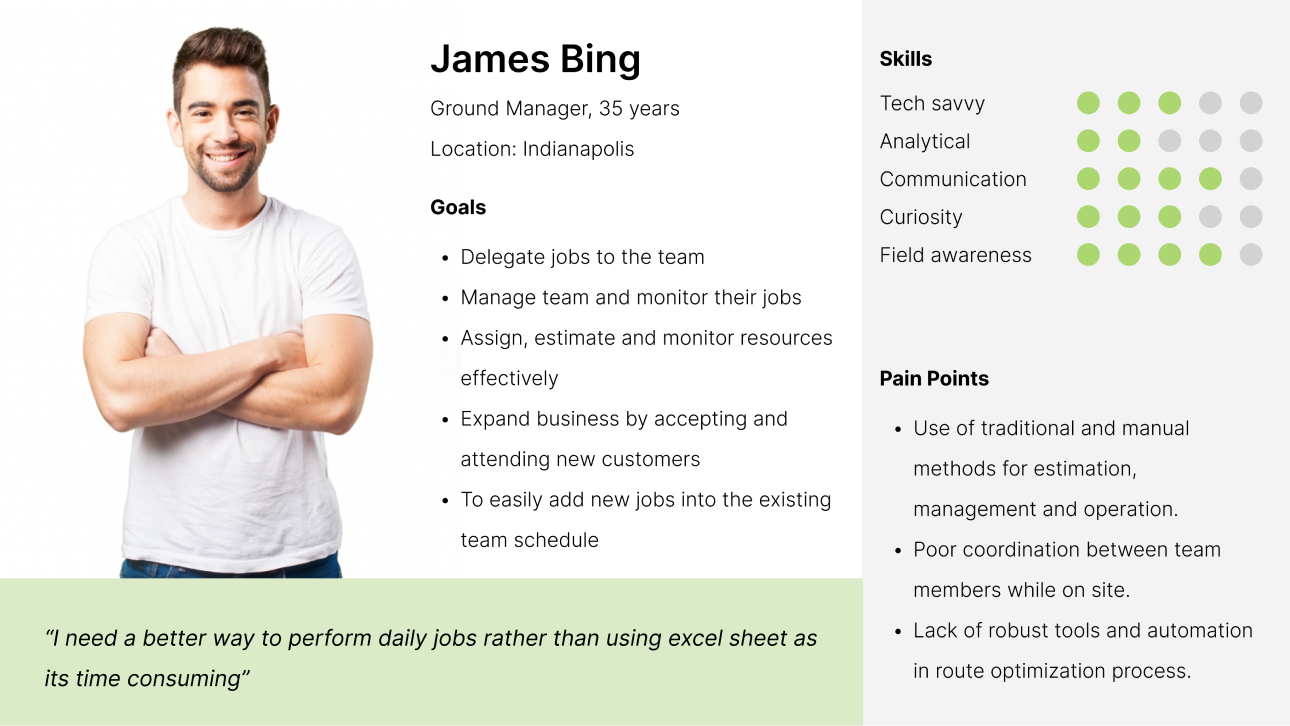
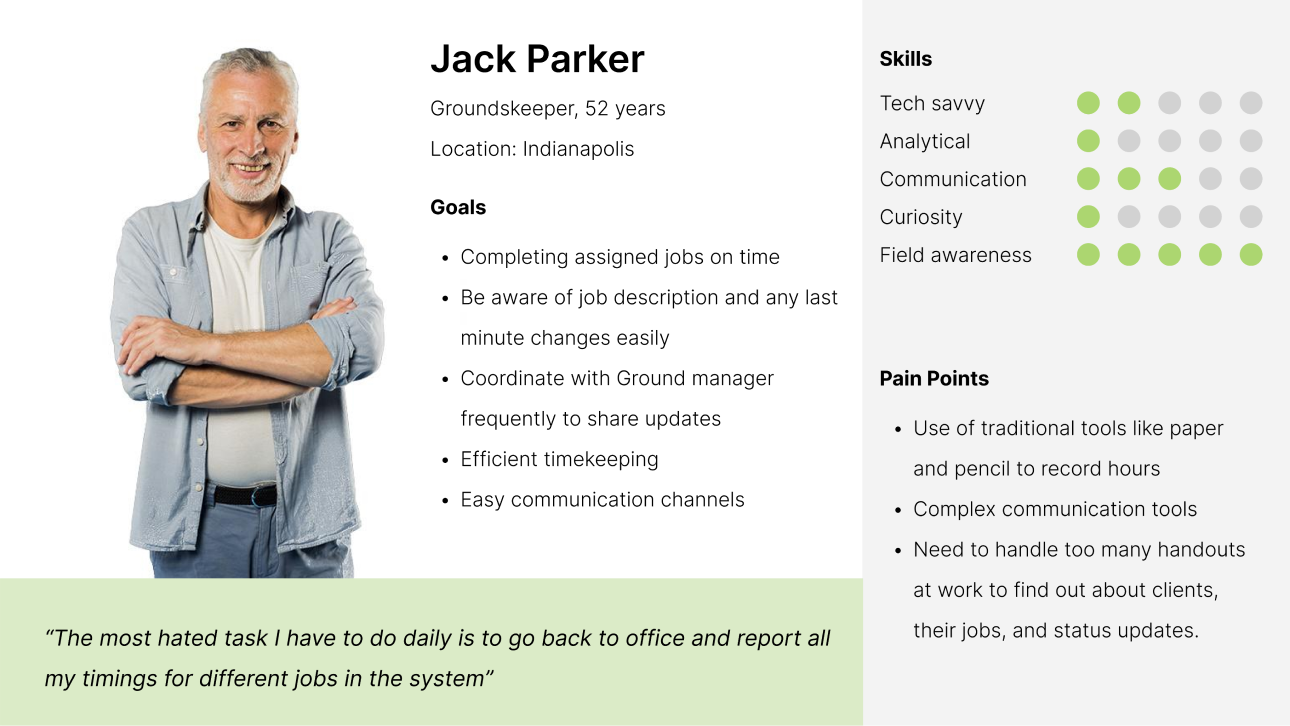
Existing workflow
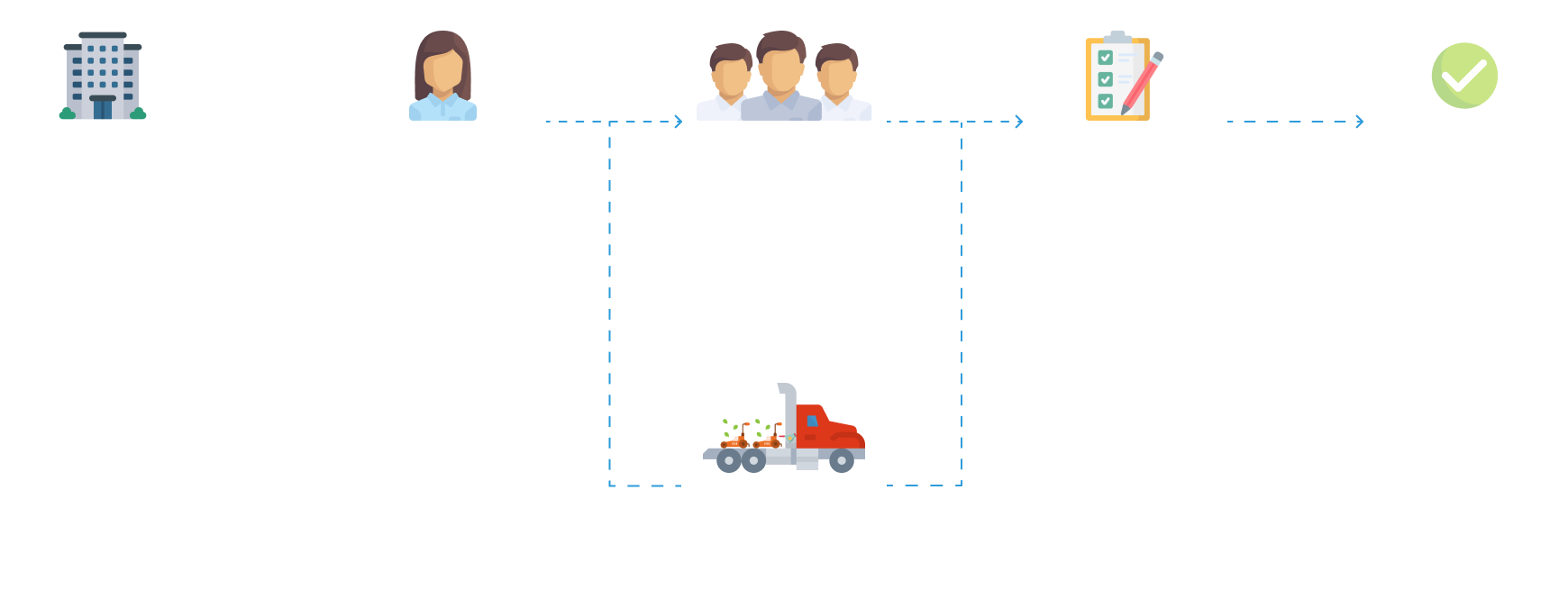
After performing observations and interviews, I found a general workflow followed across local lawn care companies. Ground managers receive several customer requests on a daily basis which has to be sorted depending on the client location, and team availability. Once the requests are approved, Ground manager creates a team of groundskeepers to deliver services to clients located in close proximity. Ground manager assigns different machines and resources to the team along with an optimized route using mapquest, google maps or physical maps to complete the jobs on time.
After receiving all the details for the next day's jobs, Groundskeepers load their trailer with required machinery and equipment late in the evening to start the job early in the morning. Ground manager and groundskeeper coordinate with each other during work hours using different communication tools and stay updated regarding the job completion status.
At the end of the day, the groundskeeper reports their work hours, resources quantity and any incomplete jobs to the ground manager. All the pending jobs are rescheduled by the Ground manager for the next day / week depending on the time slots available for different teams.
Mapping the user journey
I mapped Ground manager's user journey to identify touch points and opportunities in the day to day routine. User journey helped us to dive deeper into the core problems, and served as a great reference during the Ideation stage for bridging the gaps with potential ideas
Problems

01
Inefficient Team building process
Lawn care companies face difficulties in creating teams of groundskeepers based on their skills and availability for performing jobs located close together. The process is outdated, time-consuming, and requires a lot of manual work, such as calling each groundskeeper and determining their availability. Despite the hours spent on building a team, the teams change frequently due to available jobs. It is challenging to determine who is available and has the necessary skills.
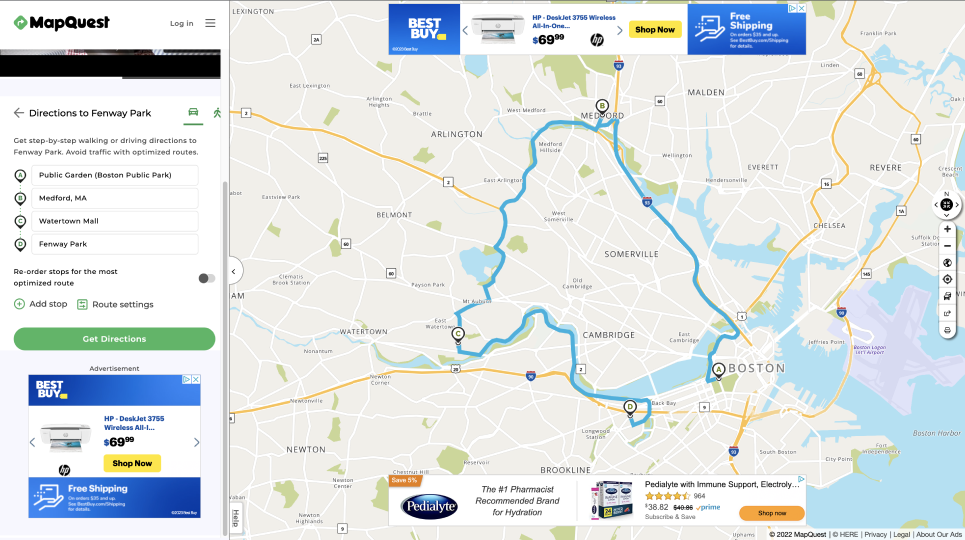
02
Dynamic Route Optimization for Job Assignments
Once a team is made, the ground manager chooses jobs close by and finds the quickest route using tools like MapQuest and Google Maps to avoid traffic and save time. If new clients ask for a service, the manager has to find a good team for it and change the route to fit the new job.
03
Time-Consuming Equipment Planning and Preparation
The ground manager and groundskeeper take a lot of time to plan what equipment and machines to take for the next day's jobs. They usually do this late in the evening and check what equipment is available from the handouts of resources available with the company. This makes sure the groundskeeper has enough time to load everything on the trailer and prepare it, like adding fuel and maintenance.

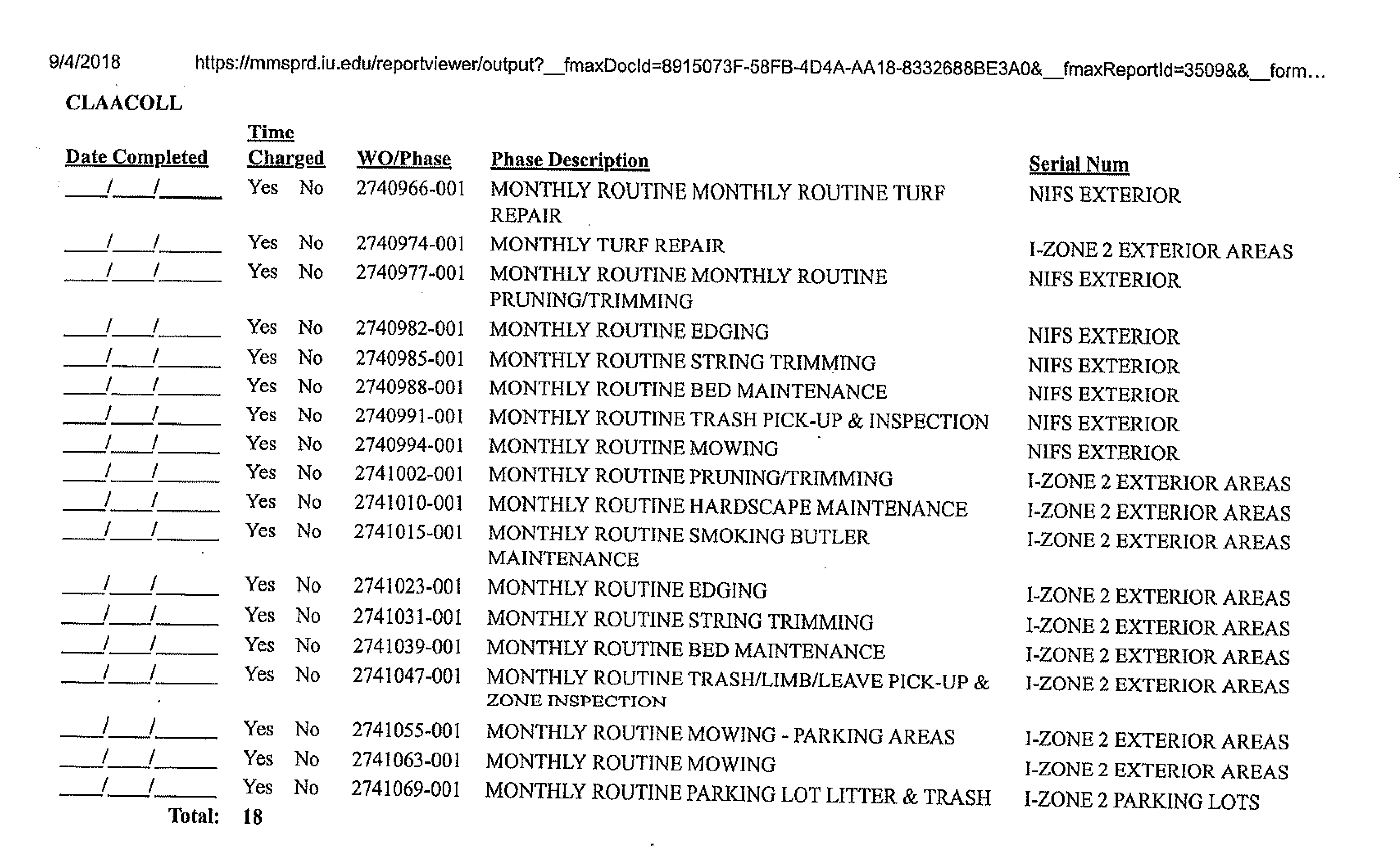
04
Challenges in Real-Time Job Monitoring
Ground managers have trouble staying updated on their team's job progress because communication is unreliable and noisy at the job site. In big companies, keeping track of each team is a slow and difficult task. At the end of every day, each team must give the ground manager a list of finished jobs so they can plan the remaining jobs for the following weeks.
PROBLEM STATEMENT
Lawn care companies face many challenges in their daily operations, resulting in lower efficiency and productivity.
Ideation
Once we mapped out all the problems, we started ideating possible solutions to address the above listed problems. I conducted a sketching workshop with the team to throw out ideas and then narrowed our ideas into 3 potential solutions.

Shaping the user flow
We reviewed our ideas with Stakeholders and decided to move ahead with an iOS application for ease of use. I sketched interactions as a storyboard to visualize how a mobile app would bridge the gap in different use cases. Storyboard served as a great reference for all of us to start sketching early paper prototypes.
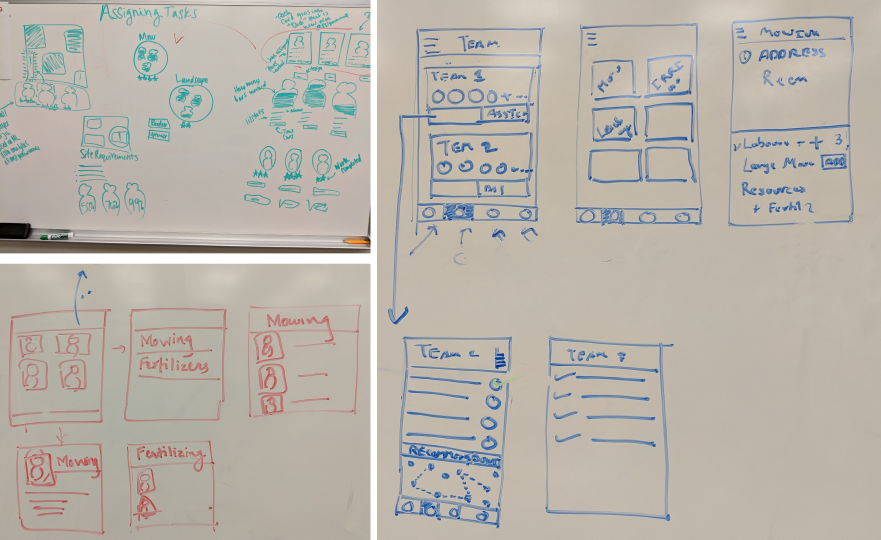
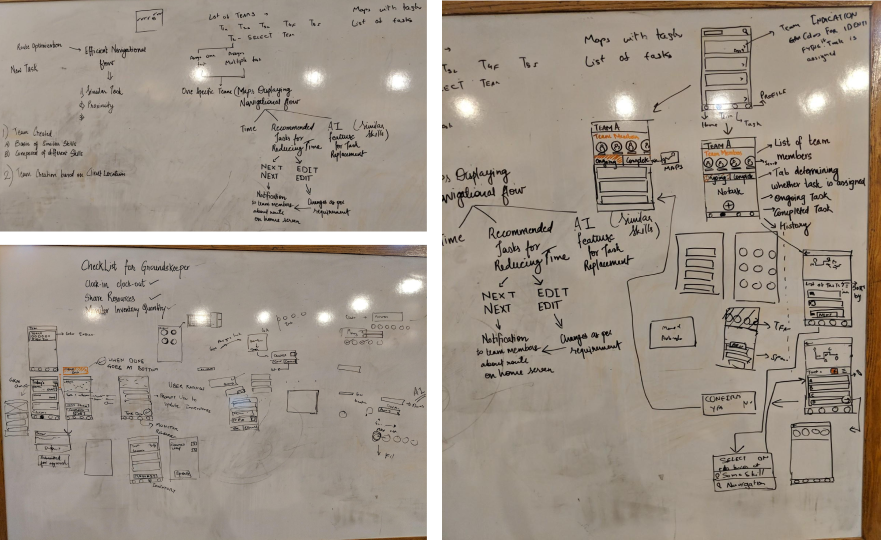
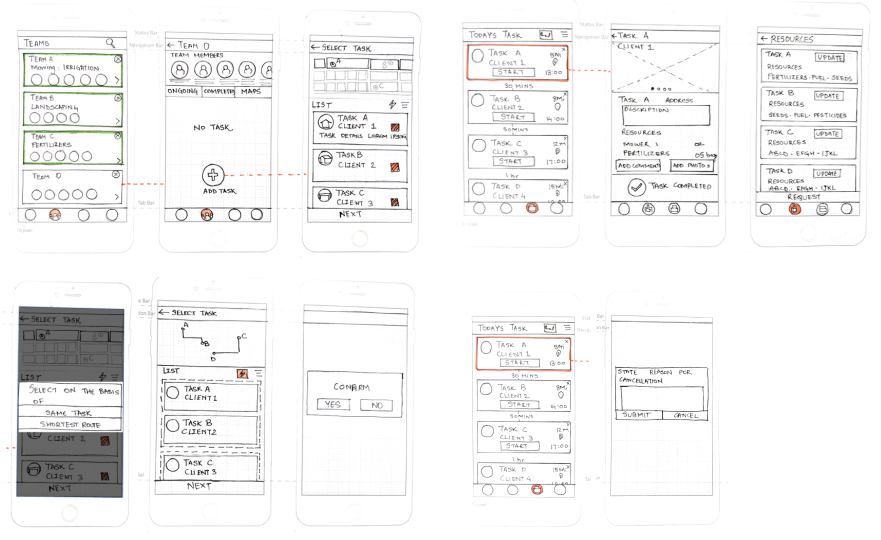

Low FI Mock ups
Early paper prototypes and sketches helped us to review our approach with the stakeholders and we came up with two hypotheses or two approaches based on how teams are created and jobs are assigned by the Ground manager. To validate our hypotheses with users, I designed low fidelity mockups and presented it to the lawn care companies with the team to gather feedback and validate our assumptions. We realized most lawn care companies prefer to create teams of groundskeepers first and then assign jobs. They expect these teams to be flexible and dynamic which means it can change on a daily basis or after a week. These initial insights helped us to map the next user flow accurately.
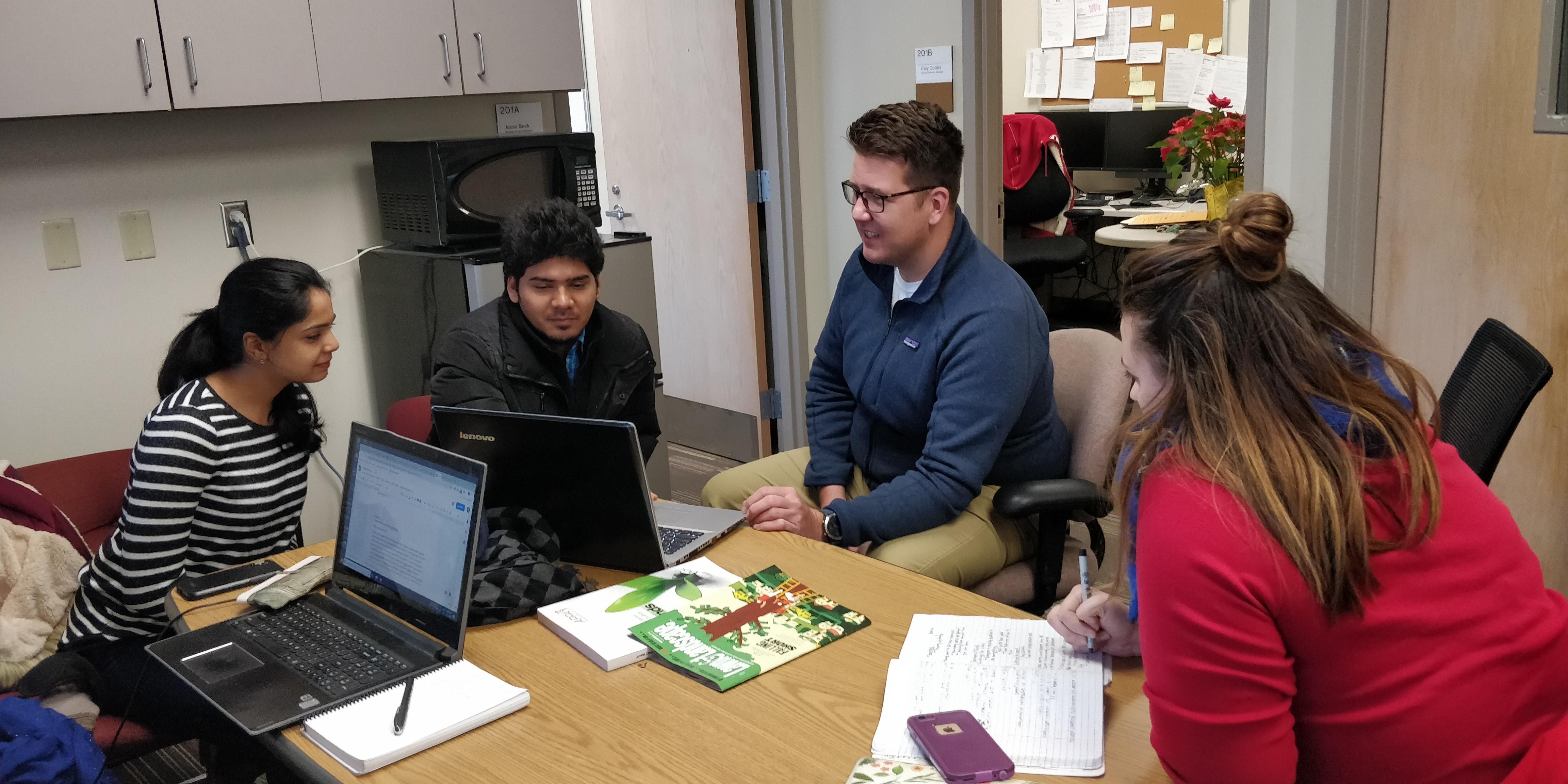
High fidelity mocks
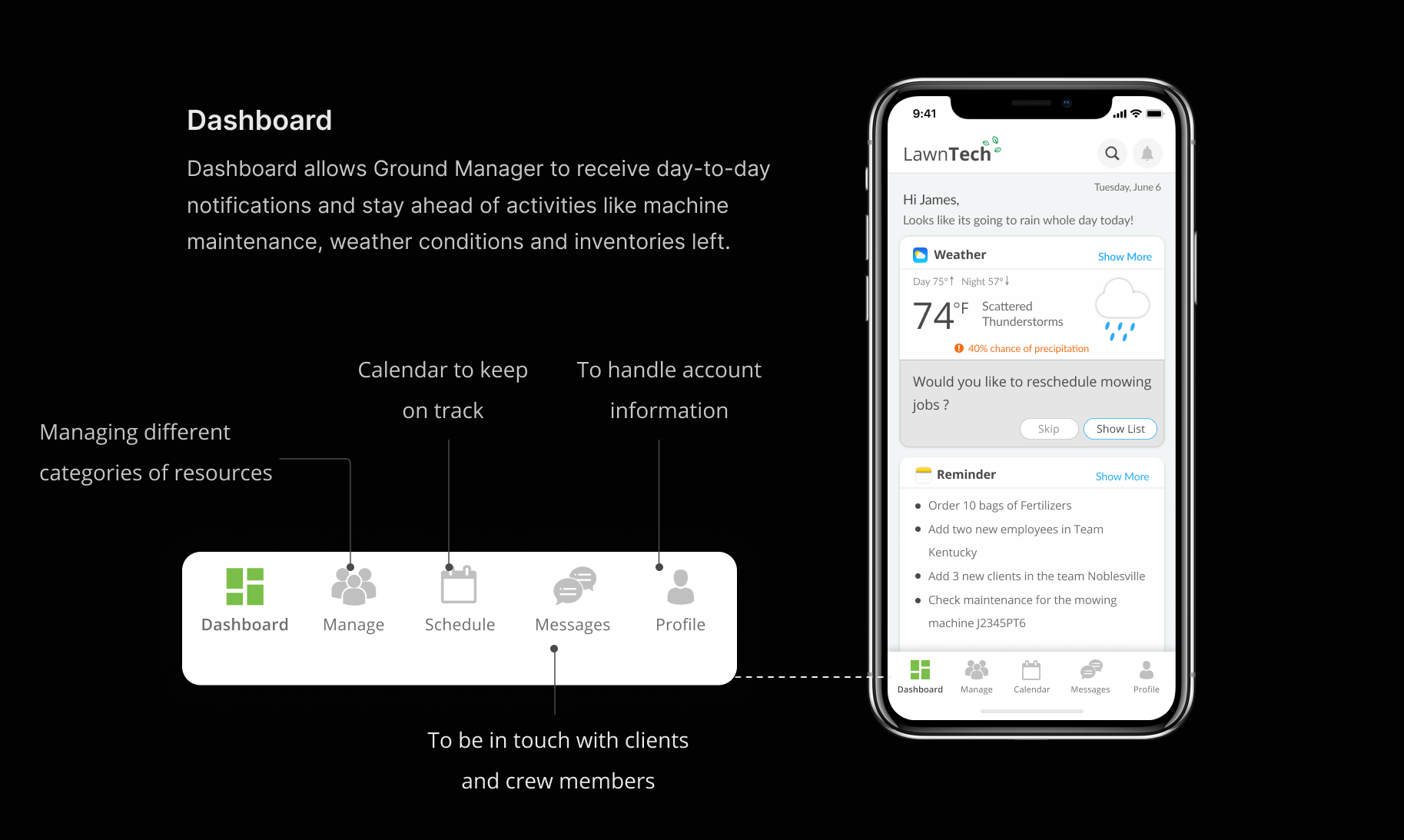
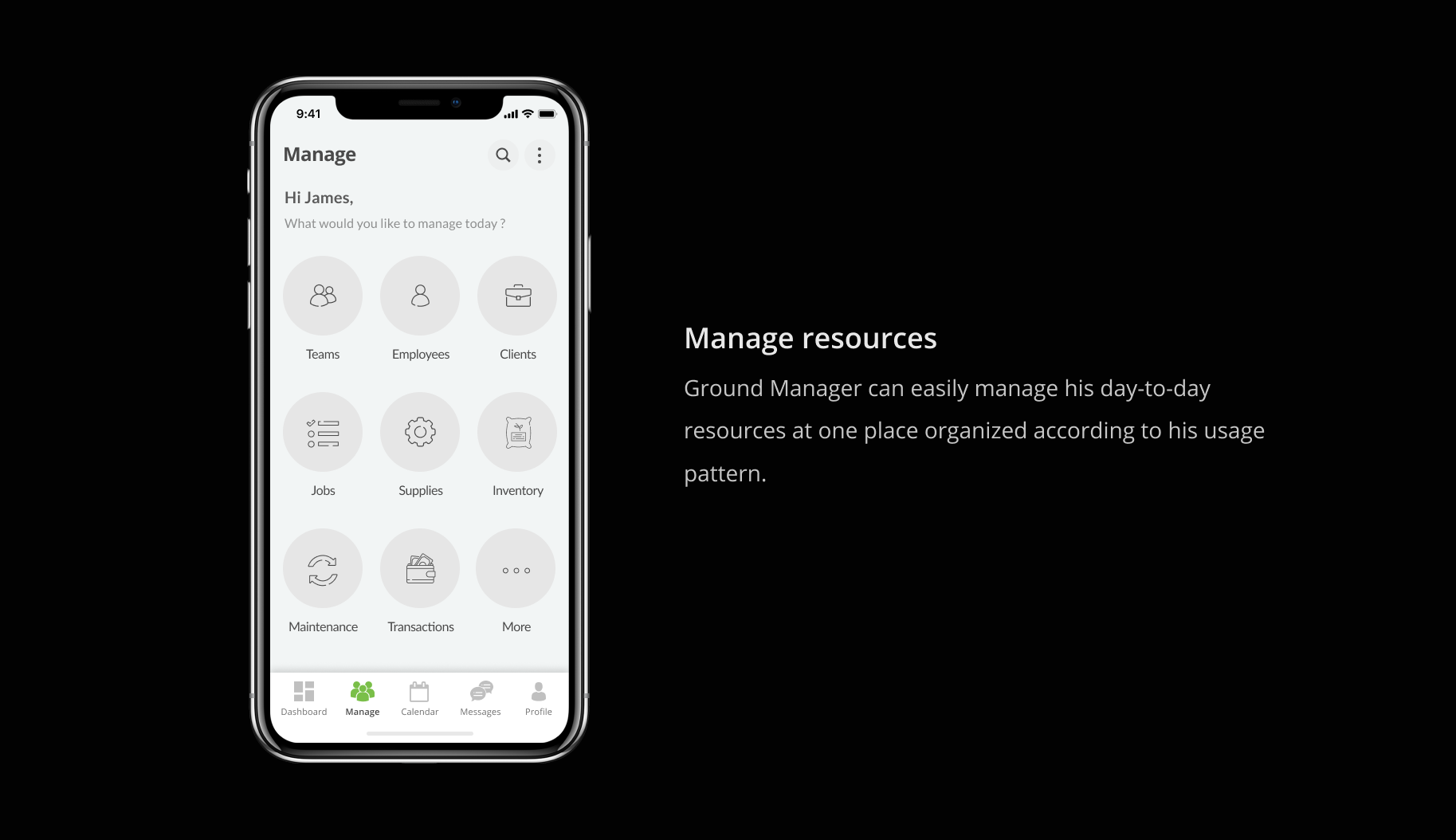
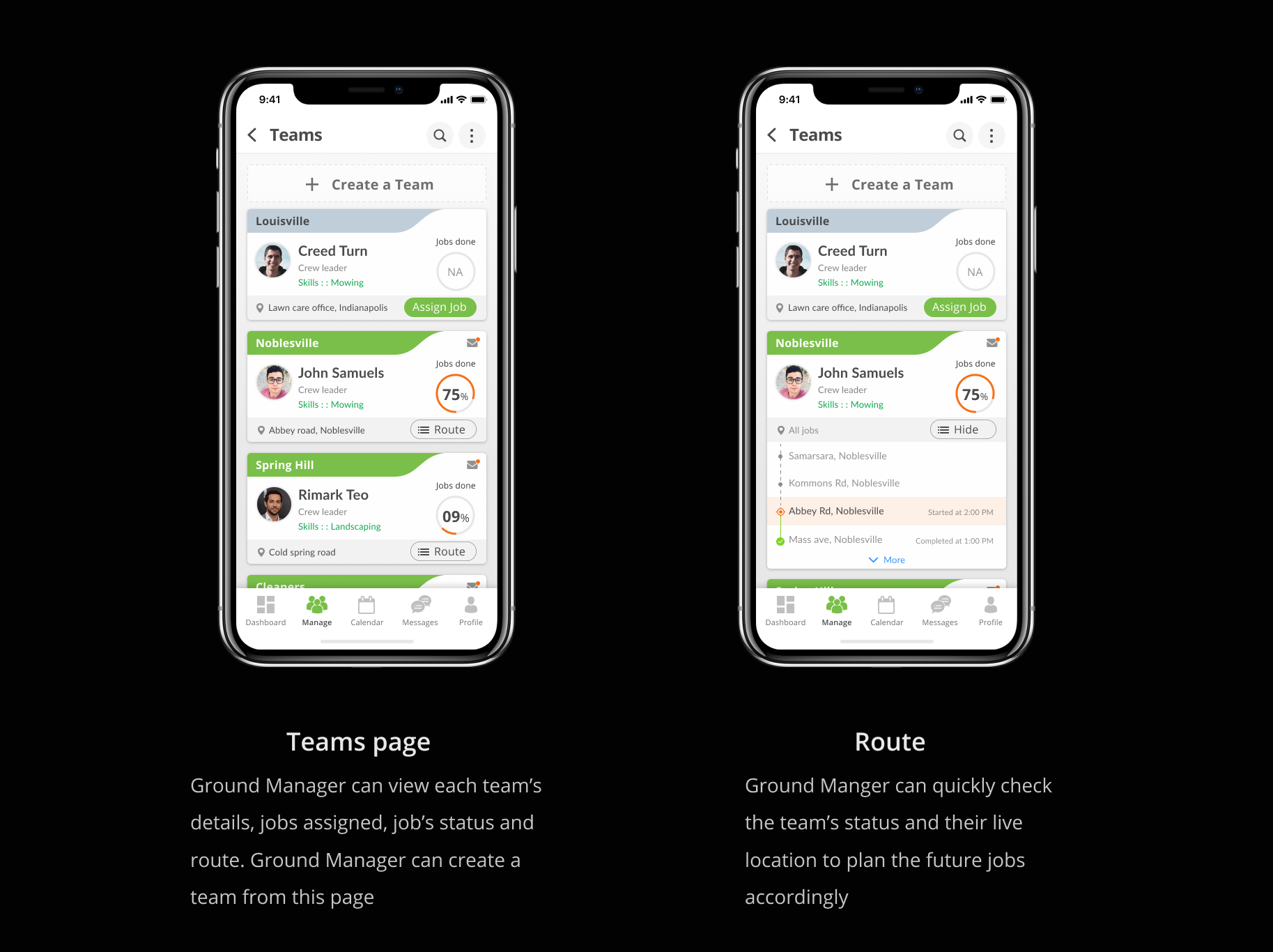
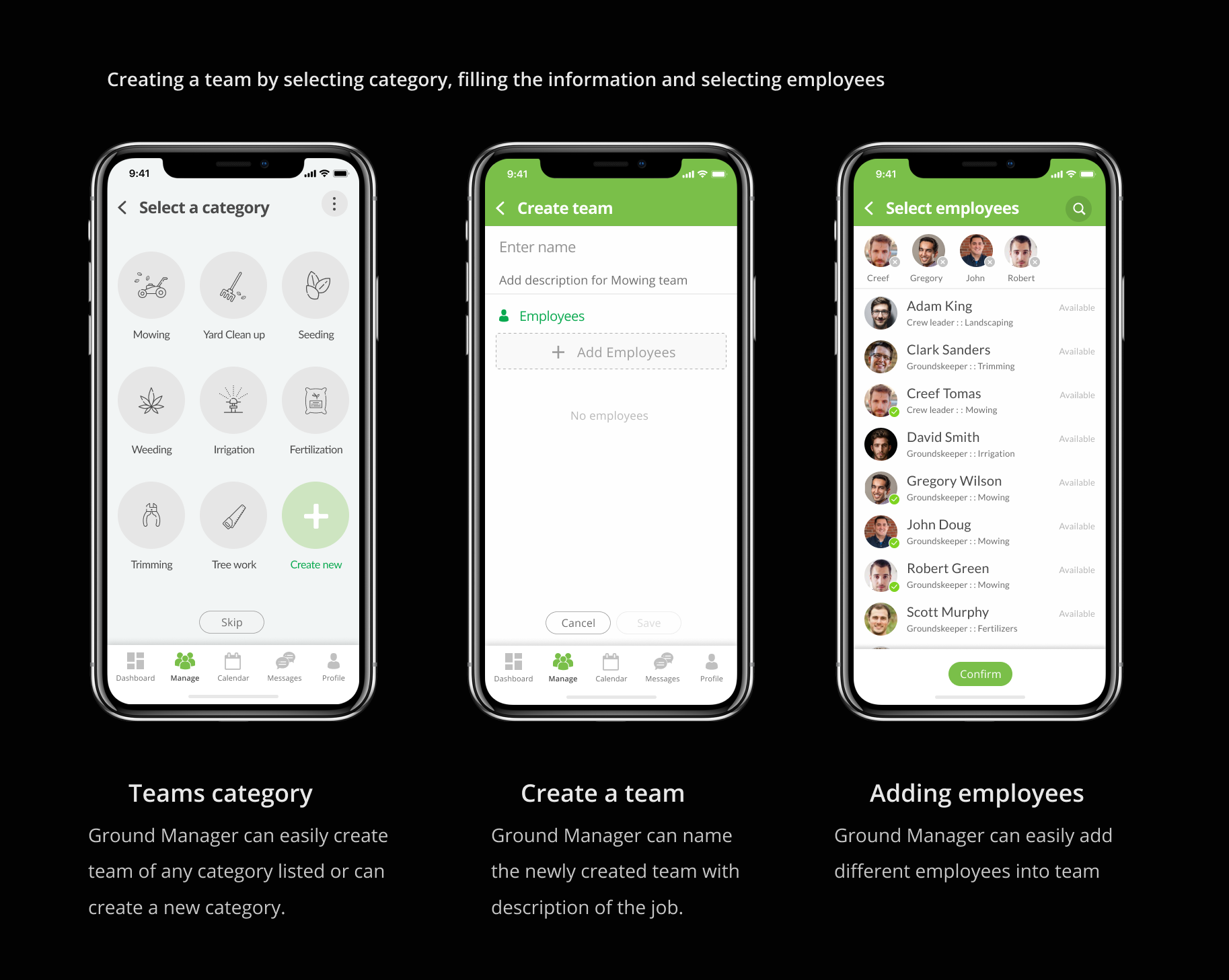
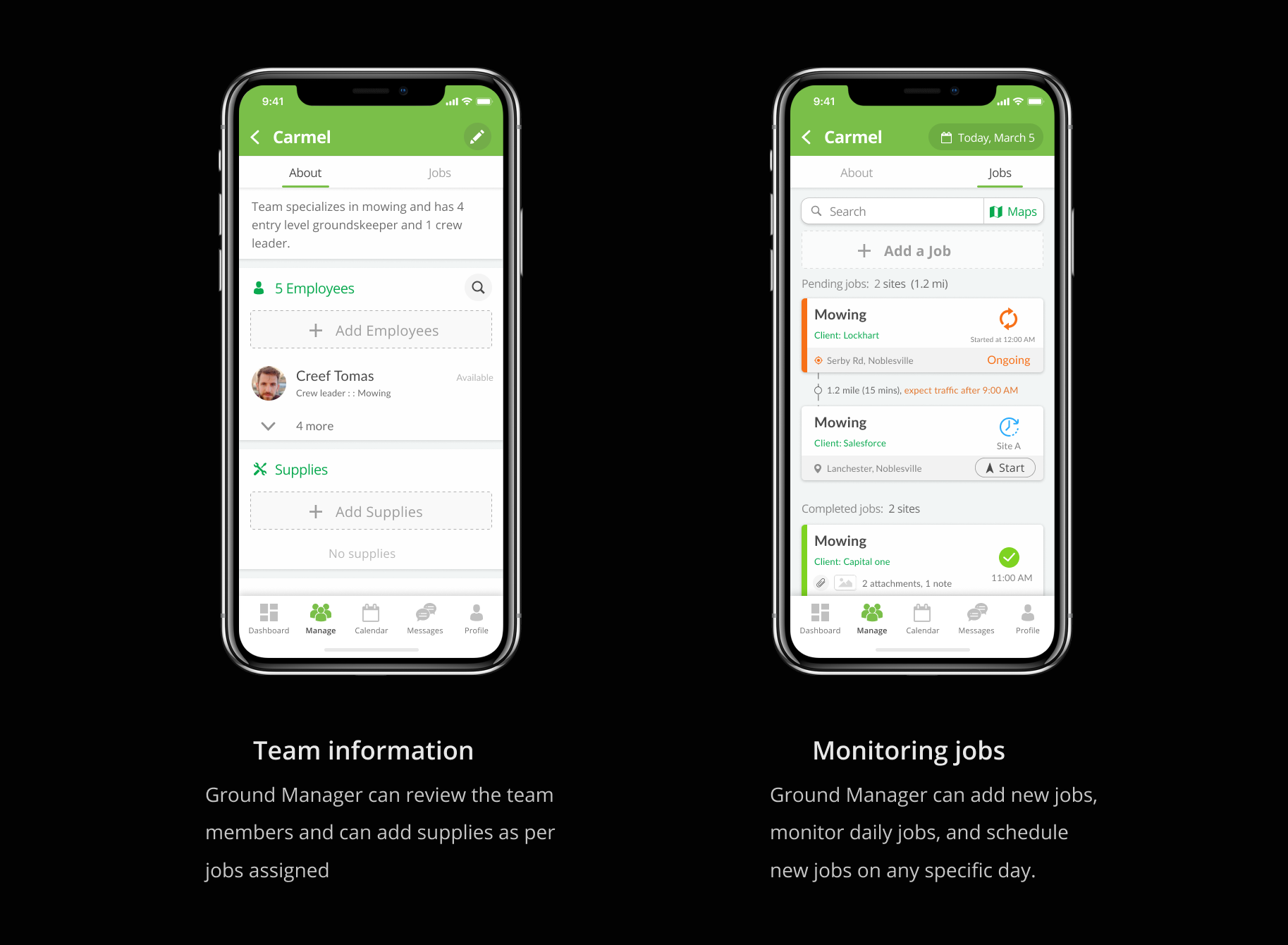
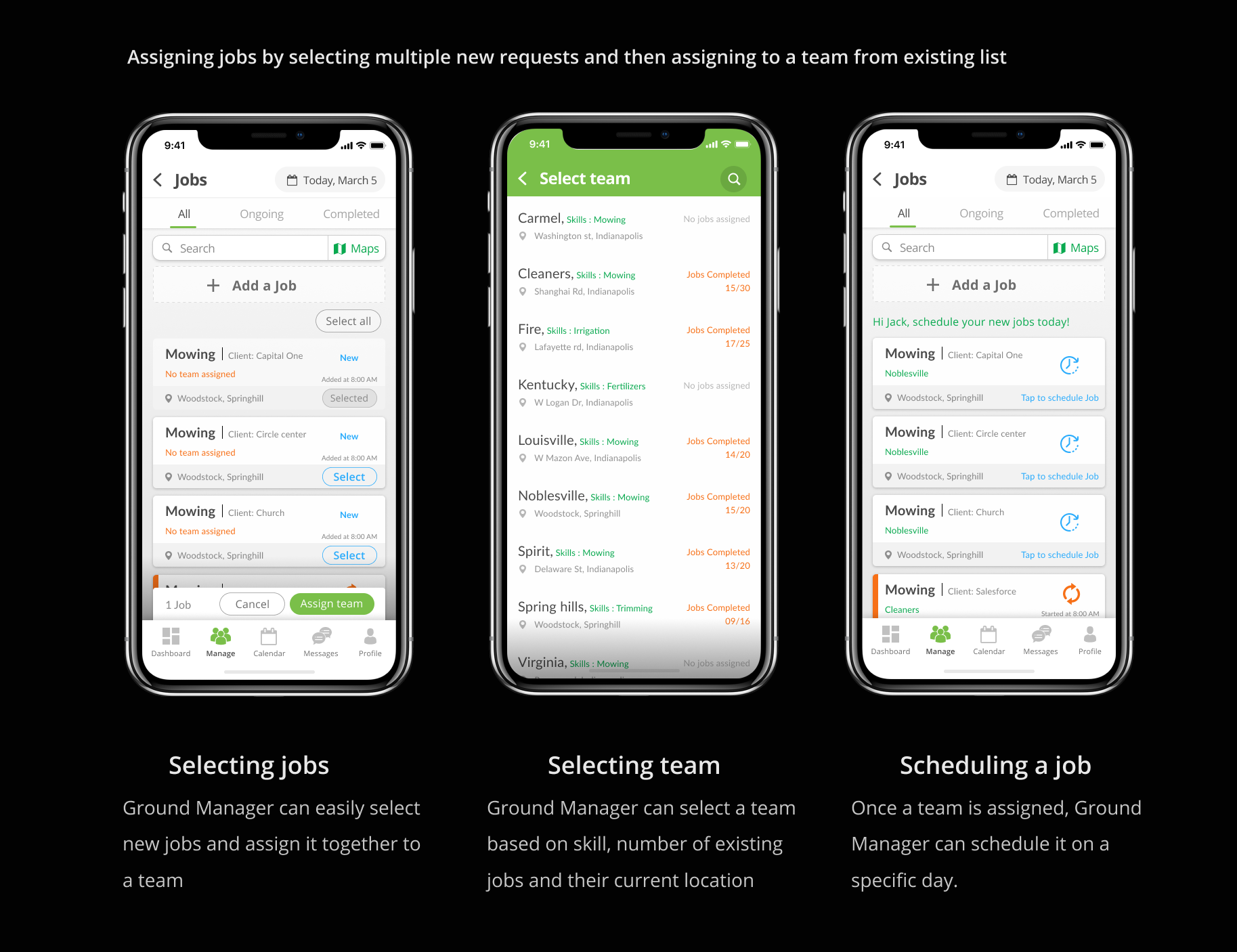
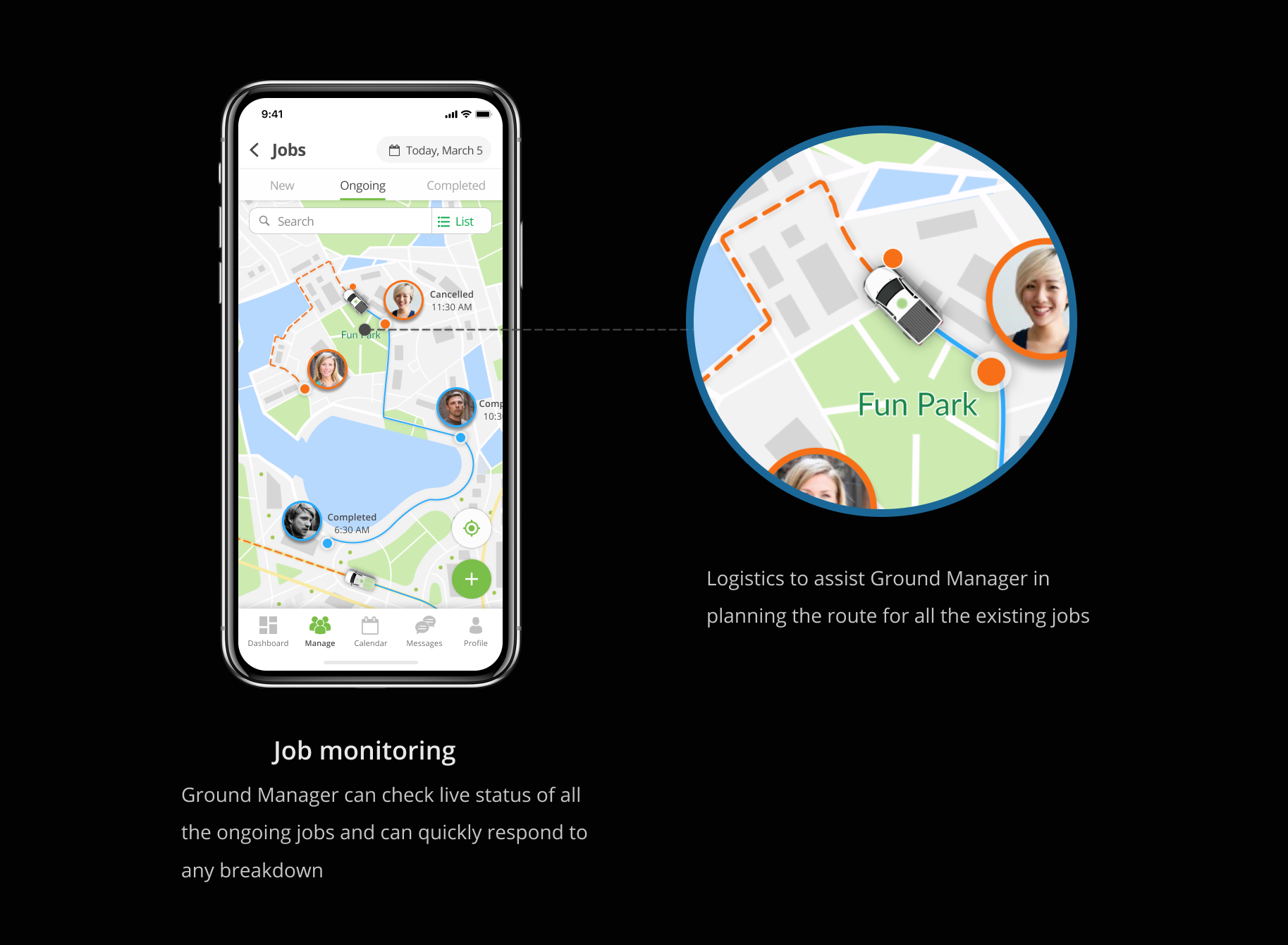
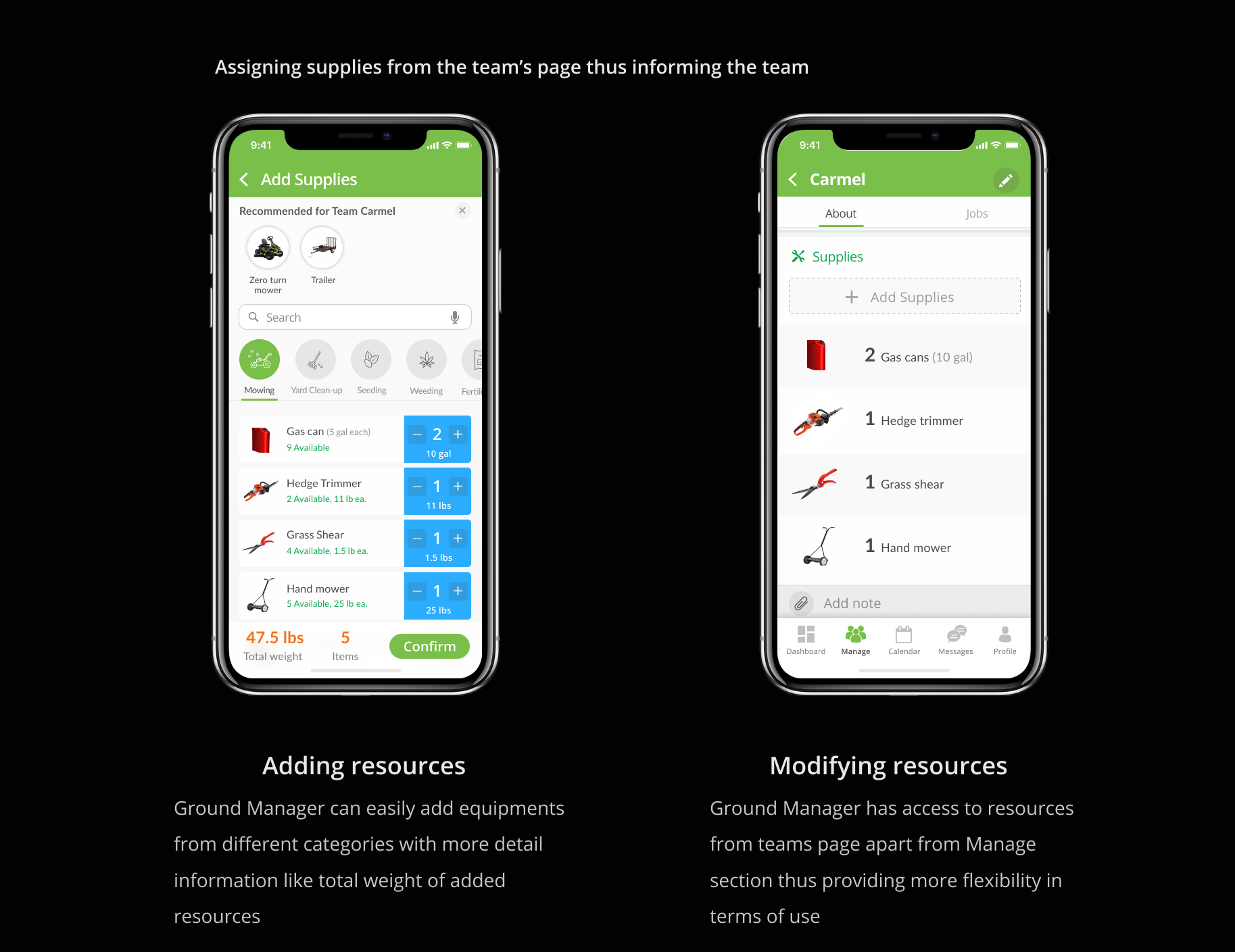
Evaluation
We conducted user testings with two lawn care companies and collected their opinions, thoughts and feedback on our prototype. Overall our users termed it as usable and valuable to them and recommended something like Route optimization to help them with daily tasks.
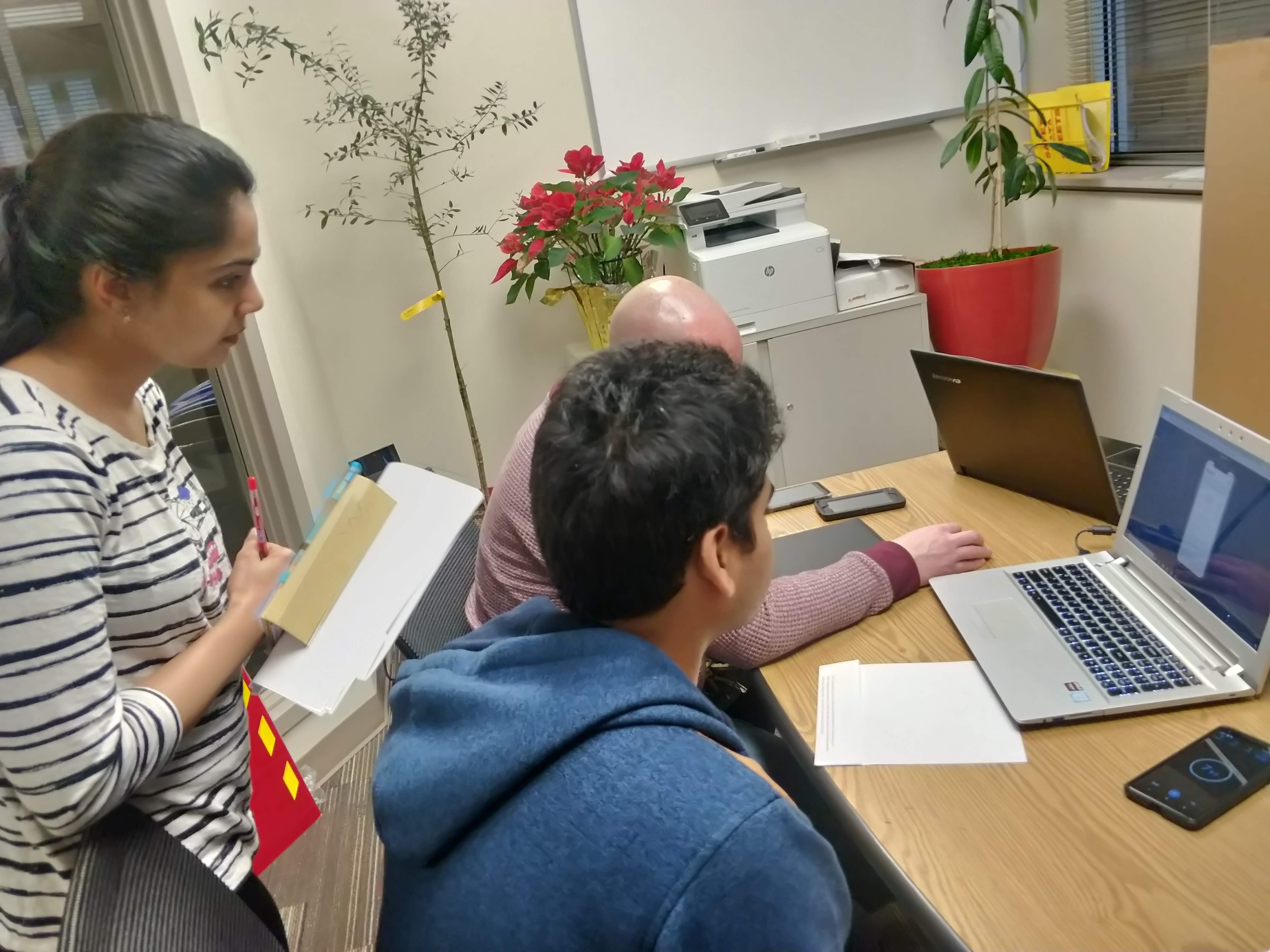
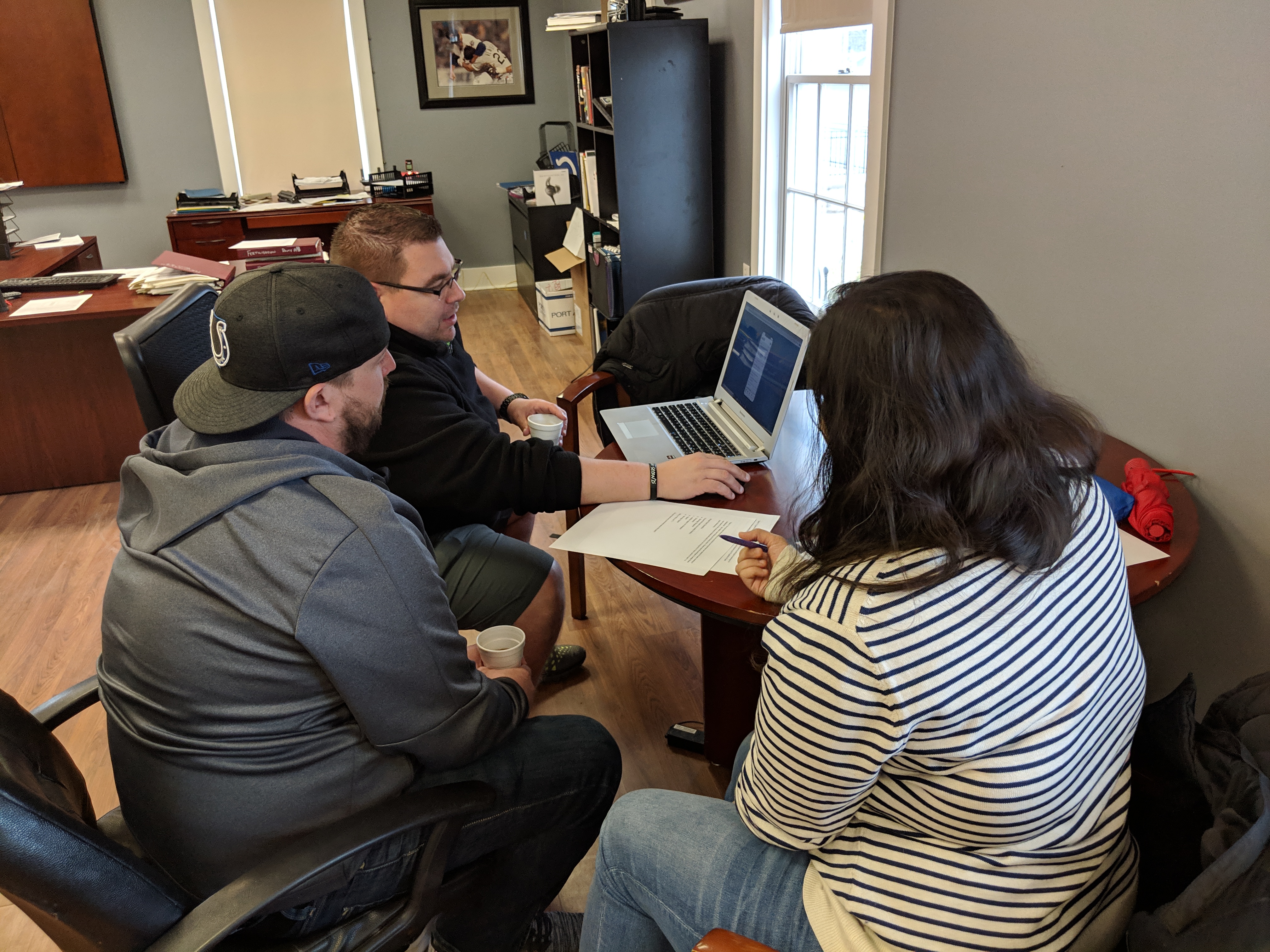
Iterations
Visual Design
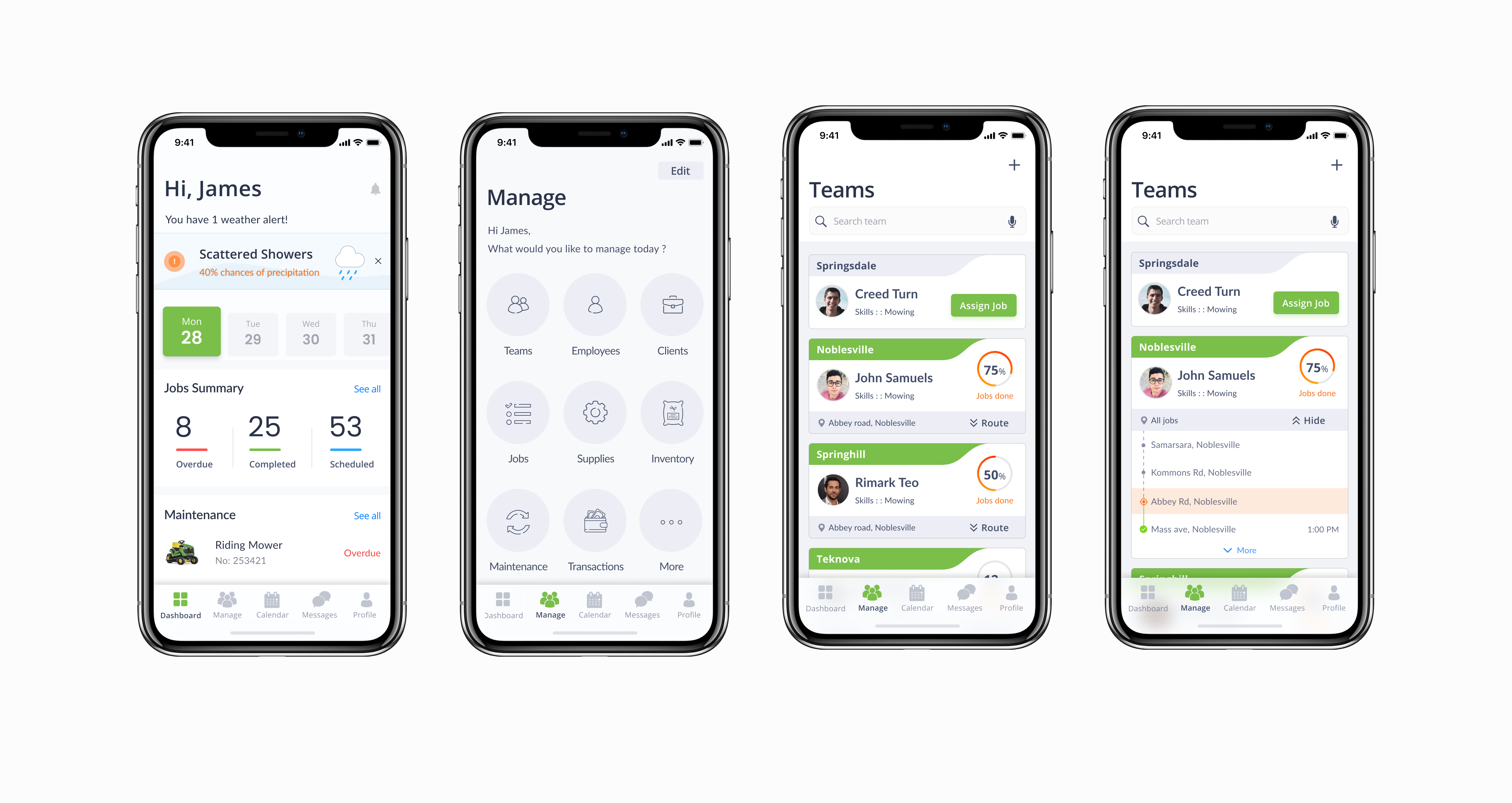
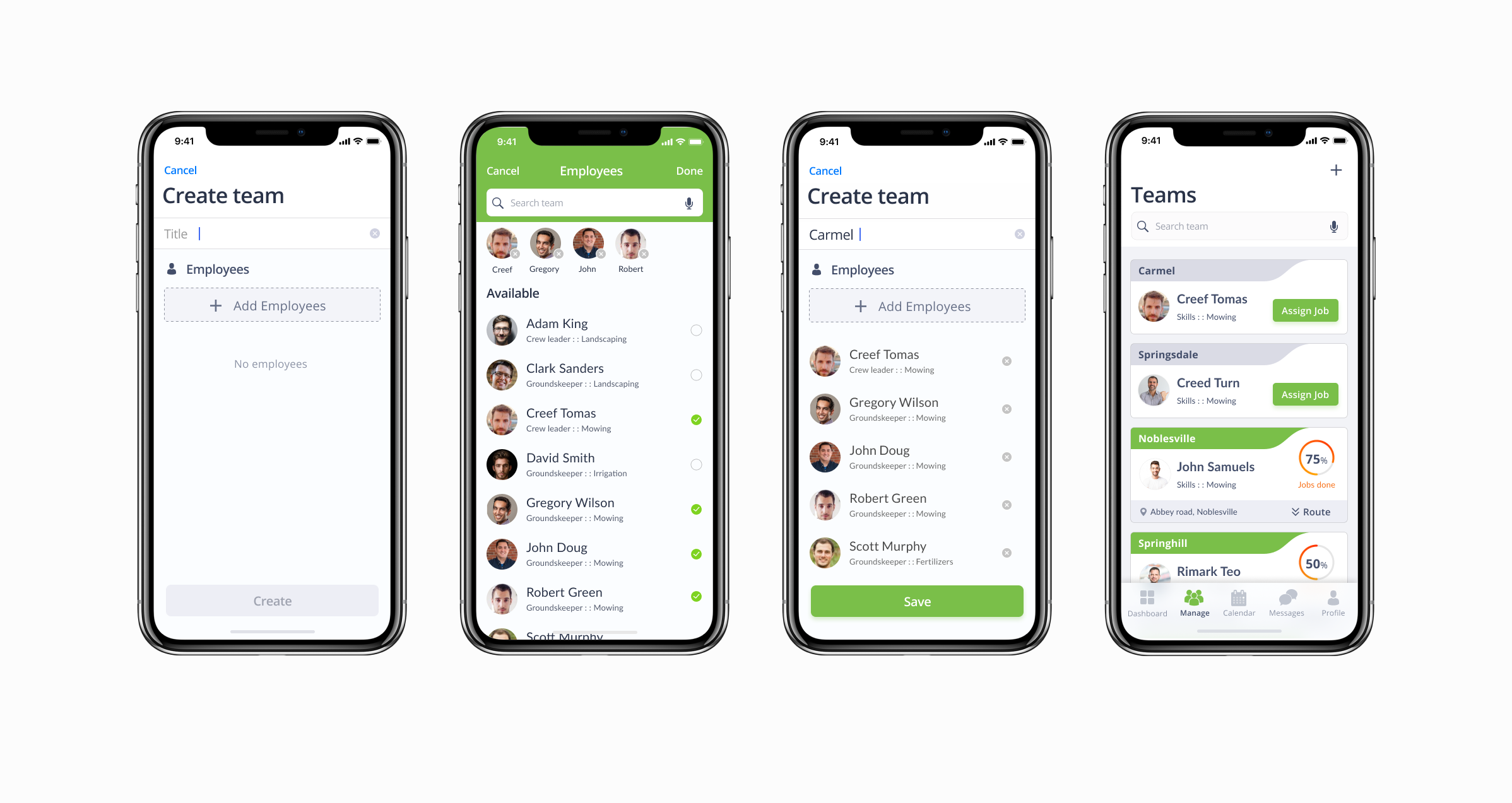
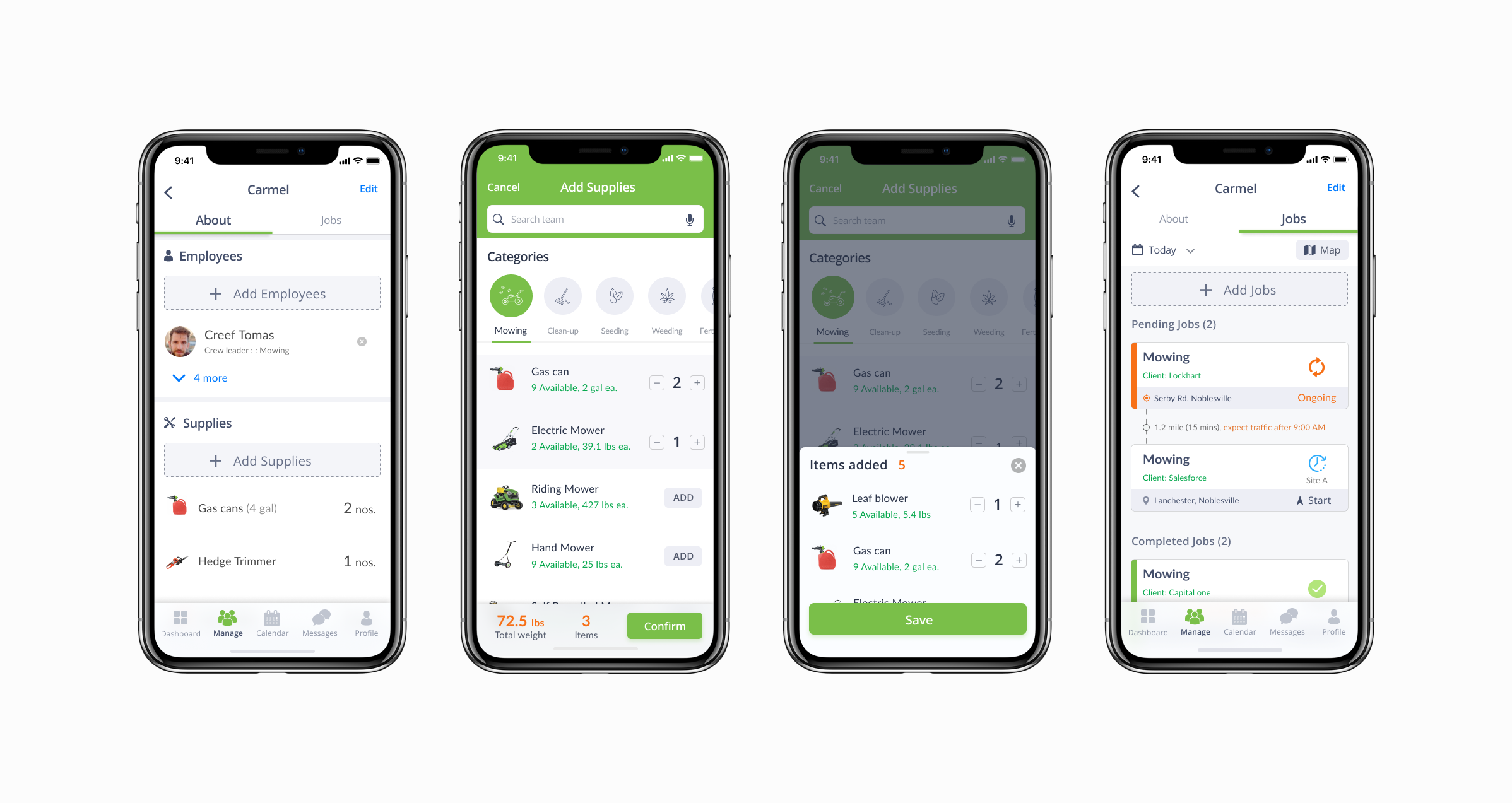
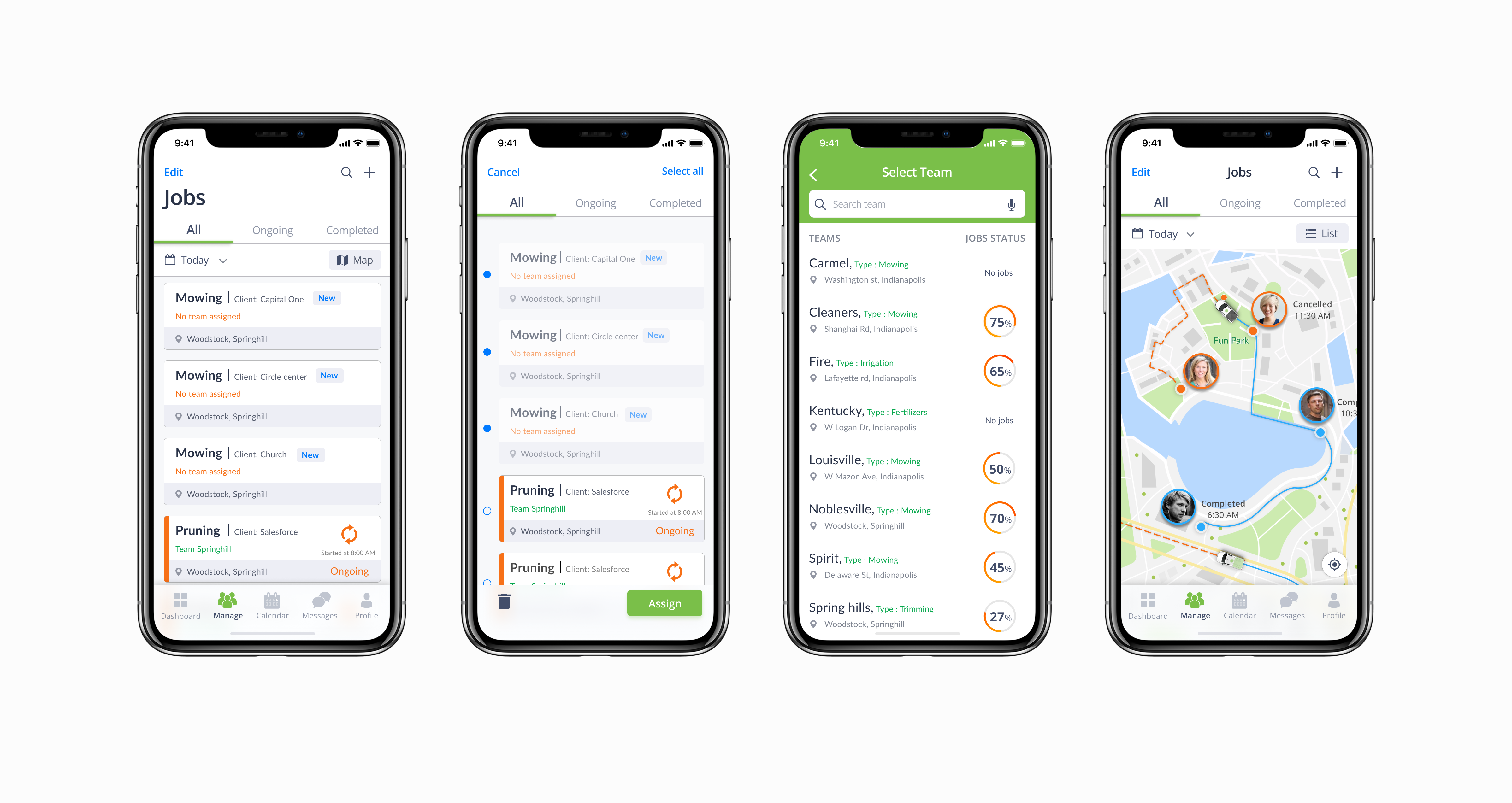
Style Guide
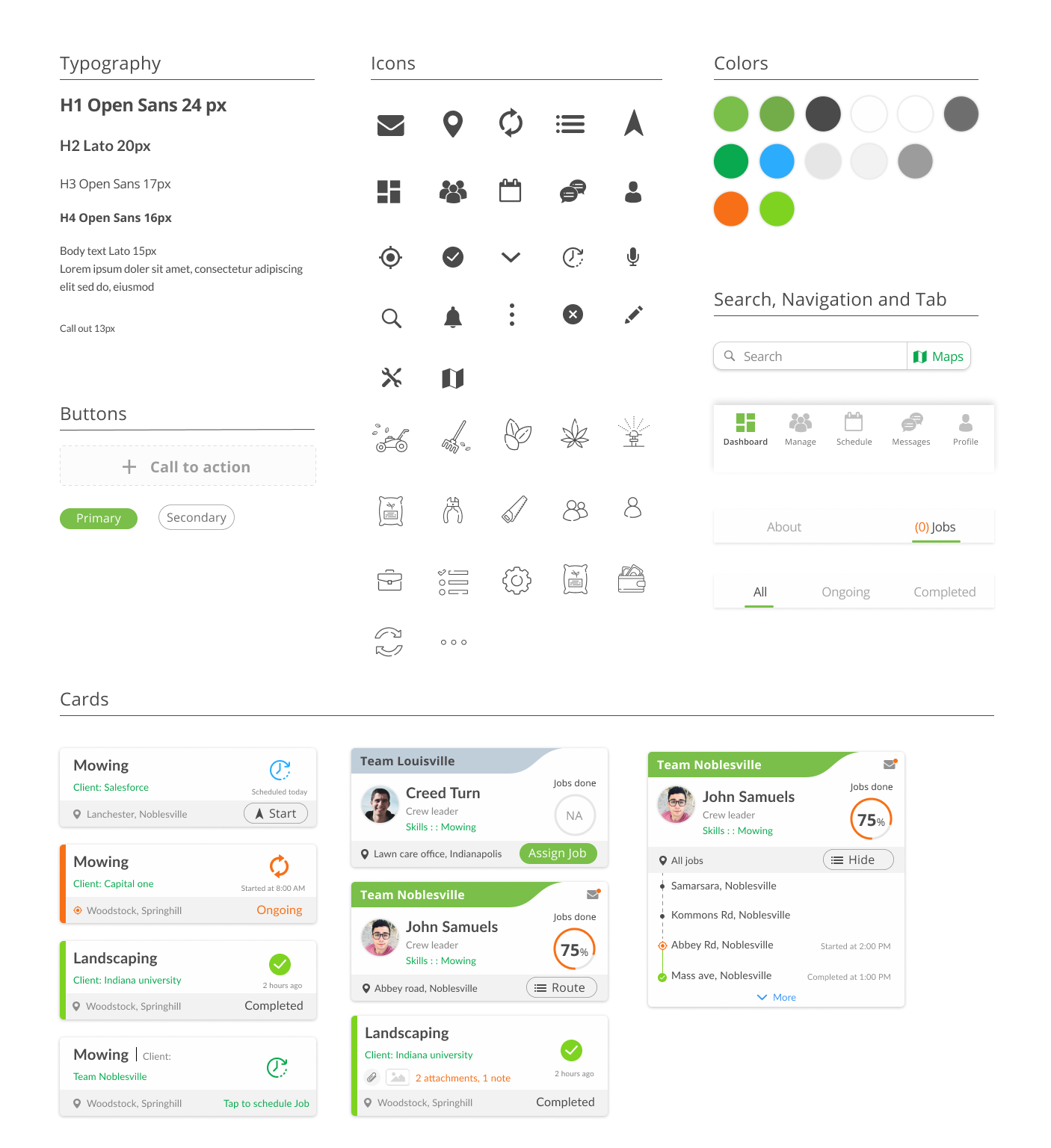

 Linkedin
Linkedin